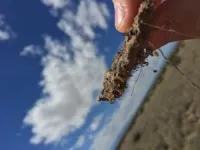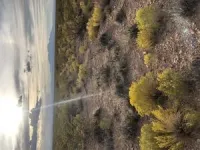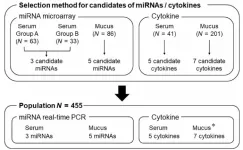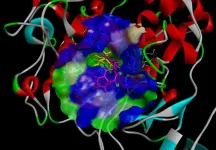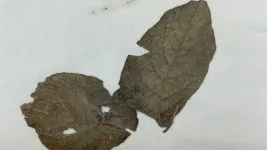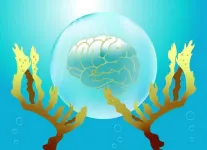(Press-News.org) Drylands, found across every continent, cover about 45% of the Earth's land surface and support 38% of the human population. In these regions, precipitation is low and evaporation rates are typically high, leading to an arid or semi-arid climate. Due to scarce water resources and sparse vegetation, drylands present formidable challenges for agriculture and human habitation. As the climate continues to warm, drylands are rapidly expanding.
A particularly urgent problem in drylands is climate-driven soil degradation, which affects about 33% of the planet’s land surface.
Drylands host distinct soil microbial communities, featuring biocrusts comprising cyanobacteria (blue-green algae) and fungi. These vital communities, resembling fragile crusts formed by mosses, lichens, cyanobacteria, and fungi, reside on the soil surface. They play essential roles in enhancing soil stability, minimizing erosion, nitrogen fixation, and enriching soil organic matter, thereby maintaining soil health and fertility in these ecosystems.
Currently, little is known about the physiological resistance of these microbes to climate stressors or the specific functions of individual species.
To enhance understanding of climate resistance of individual microbes and to improve microbial remediations to reduce soil degradation under climate change, Florida Atlantic University has received a $1.3 million grant from the National Science Foundation (NSF).
The project, spearheaded by Vanessa Moreira Camara Fernandes, Ph.D., principal investigator and an assistant professor of biological sciences, within FAU’s Charles E. Schmidt College of Science, will deepen knowledge of how microbes react to climate conditions, how these reactions impact their communities and the functions of ecosystems, and how ecosystem dynamics, in turn, affect microbial responses to climate.
“Drylands generate feedback to climate change because they account for about one-third of global soil organic carbon and make the largest contributions to interannual carbon fluxes of any terrestrial biome,” said Fernandes.
Research activities will integrate knowledge across levels of biological organization to improve the accuracy of predictions on soil health under climate change and discover microbial solutions that can maximize the resistance of soil health to climate change. The project will build the first comprehensive dataset on dryland microbe physiological resistance to heat and drought. Through trait-based analyses, researchers will investigate overarching principles governing microbial resistance to climatic stressors.
“The design of microbial assemblages for dryland restoration will test our novel hypothesis that integrating bacterial and fungal communities will confer greater resistance against heat and drought and restore function to degraded soils,” said Fernandes. “We are excited about the potential of this research to generate unique predictions and solutions aimed at enhancing the resilience of drylands to soil degradation amidst climate change.”
As part of the project, Fernandes and her collaborators will conduct laboratory experiments to characterize the heat and dehydration resistance traits of 30 species and will investigate the molecular mechanisms underlying resistance in eight of these species.
“We hope to unravel how heat and drought alter microbial interactions within biocrusts, and how these microbial communities influence their own resistance to environmental stressors,” said Fernandes. “Using greenhouse mesocosms, we will manipulate heat and drought conditions to optimize microbial assemblages that can withstand climate stress.”
The project also aims to develop rules for assembling cross-domain microbial communities (bacteria and fungi) that may enhance overall resistance as well as to design climate-ready microbial communities to be applied in field experiments and reverse soil degradation.
“Our field experiments will determine if what we've learned in the lab and simulated environments can be applied to real-world conditions, creating microbial communities that can restore soil health by withstanding heat and drought," said Fernandes.
Ecologists and microbiologists will work collaboratively on activities that leverage prior NSF-funded infrastructure and biological collections, including collaboration with Sevilleta LTER. The project coalesces a new interdisciplinary team for dryland soil health, including Jennifer A. Rudgers, Ph.D., at the University of New Mexico; and Nicole Pietrasiak, Ph.D., at the University of Nevada, Las Vegas. The team will mentor three graduate and 24 undergraduate students.
The project also will support three “Research Experience for Undergraduates” students; a new gateway majors course; a new community science photography project to raise public awareness of the ecological services of biocrusts; annual biocrust workshops for park personnel, park volunteers, land managers, retirees, school teachers, students and interpreters together with Joshua Tree National Park Association; a schoolyard Data Jam (in Spanish) with students from Las Vegas, Miami, Albuquerque and Puerto Rico; and Biocrust Data Nuggets, co-designed by scientists and teachers to bring contemporary research and authentic data into underserved K-12 classrooms.
“This significant grant from the National Science Foundation awarded to Dr. Fernandes will help fill substantial use-inspired knowledge gaps on the effective application of microbes as ‘game-changers’ to mitigate the impacts of a rapidly changing climate,” said Valery Forbes, Ph.D., dean, FAU Charles E. Schmidt College of Science. “Importantly, this project will train and inspire our next generation of scientists and conservationists, empowering them to address our most complex global issues with innovative solutions.”
- FAU -
About Florida Atlantic University:
Florida Atlantic University, established in 1961, officially opened its doors in 1964 as the fifth public university in Florida. Today, the University serves more than 30,000 undergraduate and graduate students across six campuses located along the southeast Florida coast. In recent years, the University has doubled its research expenditures and outpaced its peers in student achievement rates. Through the coexistence of access and excellence, FAU embodies an innovative model where traditional achievement gaps vanish. FAU is designated a Hispanic-serving institution, ranked as a top public university by U.S. News & World Report and a High Research Activity institution by the Carnegie Foundation for the Advancement of Teaching. For more information, visit www.fau.edu.
END
Dartmouth researchers have developed a self-powered pump that uses natural light and chemistry to target and remove specific water pollutants, according to a new report in the journal Science.
As water enters the pump, a wavelength of light activates a synthetic molecular receptor designed to bond to negatively charged ions, or anions, a class of pollutants linked to metabolic disruptions in plants and animals. A second wavelength deactivates the receptors as water exits the pump and causes them to release the ...
The method used across the United States to wait-list children for heart transplants does not consistently rank the sickest patients first, according to a new study led by Stanford Medicine experts.
The study will publish online Aug. 5 in the Journal of the American College of Cardiology.
Adding nuance to the wait-list system by accounting for more health factors could reduce children’s risk of dying while they await donor hearts, according to the study’s authors. A revision to the way donor hearts are assigned is already in process. The study adds evidence for why it is needed, they ...
Cervical cancer is a highly prevalent cancer, with approximately 500,000 new cases diagnosed each year. Shockingly, the number of individuals diagnosed with precursor lesions in the cervix—also known as cervical intraepithelial neoplasia (CIN)—is 20 times higher. As with many potentially malignant conditions, early diagnosis of cervical cancer can make all the difference in a patient’s life in terms of treatment outcomes. For this, developing effective, convenient, and easily available screening protocols for CIN and cervical cancer is of paramount importance.
Currently, the two ...
Neutrinos are fundamental particles in the Standard Model of particle physics, notable for their extremely small masses and weak interactions with matter. They are important for answering fundamental questions about the universe, including why particles have mass and why there is more matter than antimatter. Despite being abundant, their weak interactions make their detection difficult, and hence they are called “ghost particles.” At any given moment, numerous neutrinos freely pass through the Earth and our bodies, which originate from the Sun or cosmic rays. Understanding their rare interactions with matter is crucial for obtaining a more complete picture ...
Melanin protects the skin—the body's largest organ and a vital component of the immune system—from the damaging effects of ultraviolet (UV) radiation. When the skin is exposed to UV radiation, melanin production is stimulated in melanocytes, with tyrosinase playing a key role in the biosynthetic pathway. However, disruptions in this pathway caused by UV exposure or aging can lead to excess melanin accumulation, resulting in hyperpigmentation. To address this, tyrosinase inhibitors that suppress melanin synthesis have become valuable in the cosmetic industry. Unfortunately, some of these compounds, ...
In an examination of the genetic material found in historic potato leaves, North Carolina State University researchers reveal more about the tit-for-tat evolutionary changes occurring in both potato plants and the pathogen that caused the 1840s Irish potato famine.
The study used a targeted enrichment sequencing approach to simultaneously examine both the plant’s resistance genes and the pathogen’s effector genes – genes that help it infect hosts – in a first-of-its-kind analysis.
“We use small pieces of historic leaves with the pathogen ...
Caltech researchers have developed a new method to measure soil moisture in the shallow subterranean region between the surface and underground aquifers. This region, called the vadose zone, is crucial for plants and crops to obtain water through their roots. However, measuring how this underground moisture fluctuates over time and between geographical regions has traditionally relied on satellite imaging, which only gives low-resolution averages and cannot penetrate below the surface. Additionally, moisture within the vadose zone changes rapidly—a thunderstorm can saturate a region that dries ...
AURORA, Colo. (August 5, 2024) – In a first-of-its-kind study, a cohort of researchers, led by the University of Colorado Anschutz Medical Campus, evaluated the effects of state-level insulin out-of-pocket costs across states and payers and over time. The team found that state-level caps on insulin out-of-pocket costs do not significantly increase insulin claims for patients with Type 1 or patients using insulin to manage Type 2 diabetes. Study results could help inform policies aimed at better delivering cost-capped insulin to patients struggling with insulin affordability.
Approximately ...
Parkinson’s disease is a neurodegenerative disease caused by the loss of neurons that produce dopamine, a neurotransmitter involved in motor control and cognitive function. As the global population ages, the number of Parkinson's disease patients is rapidly increasing. Parkinson's disease is induced by neuronal damage due to excessive production of reactive oxygen species.
Suppression of reactive oxygen species generation is essential because it is fatal to dopaminergic neurons that manage dopamine neurotransmitters. ...
Light pollution disrupts circadian rhythms and ecosystems worldwide – but for plants, dependent on light for photosynthesis, its effects could be profound. Now scientists writing in Frontiers in Plant Science have found that exposure to high levels of artificial light at night makes tree leaves grow tougher and harder for insects to eat, threatening urban food chains.
“We noticed that, compared to natural ecosystems, tree leaves in most urban ecosystems generally show little sign of insect damage. We were curious as to why,” said corresponding author Dr Shuang Zhang of the Chinese Academy of Sciences. “Here we show that in ...

